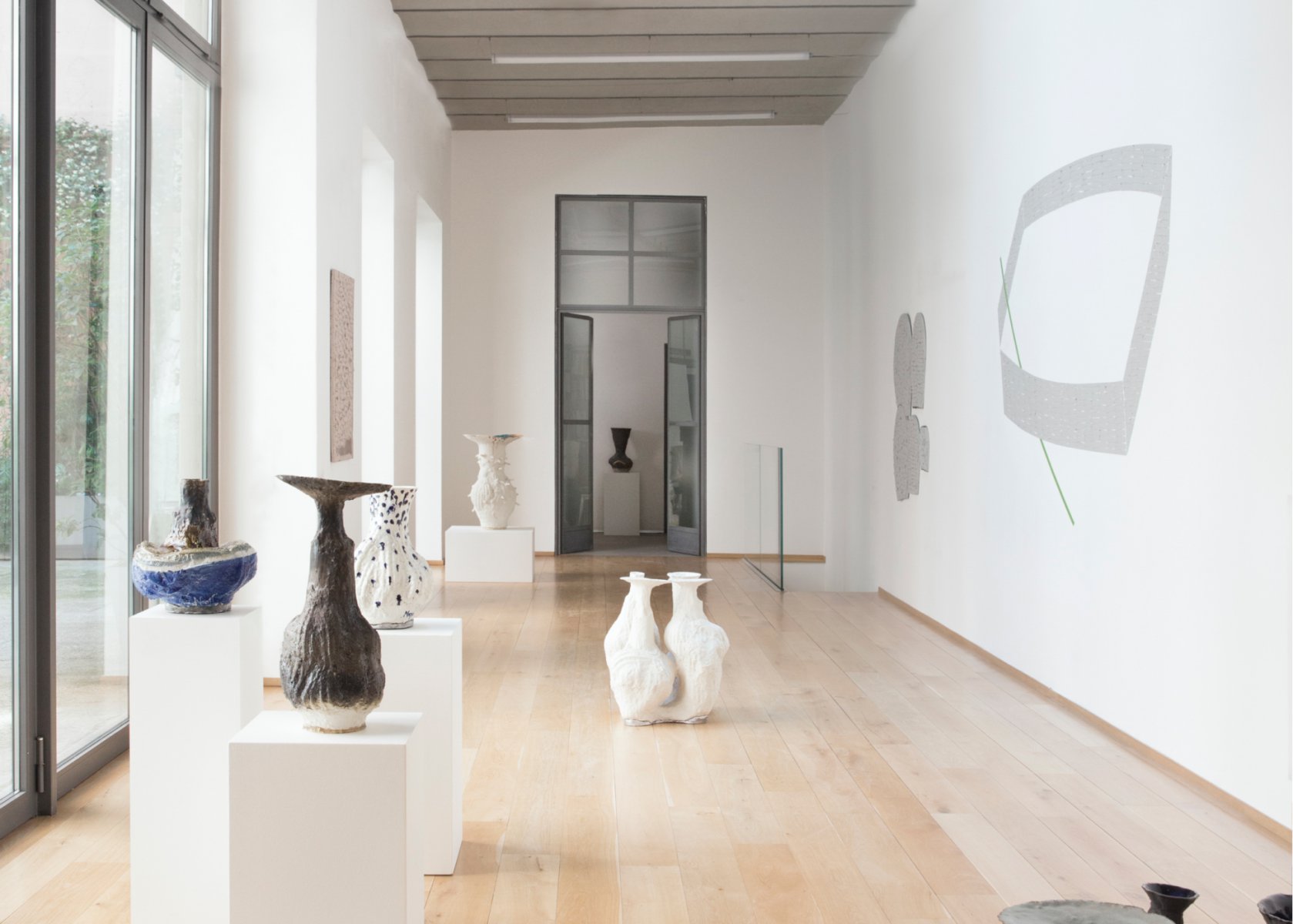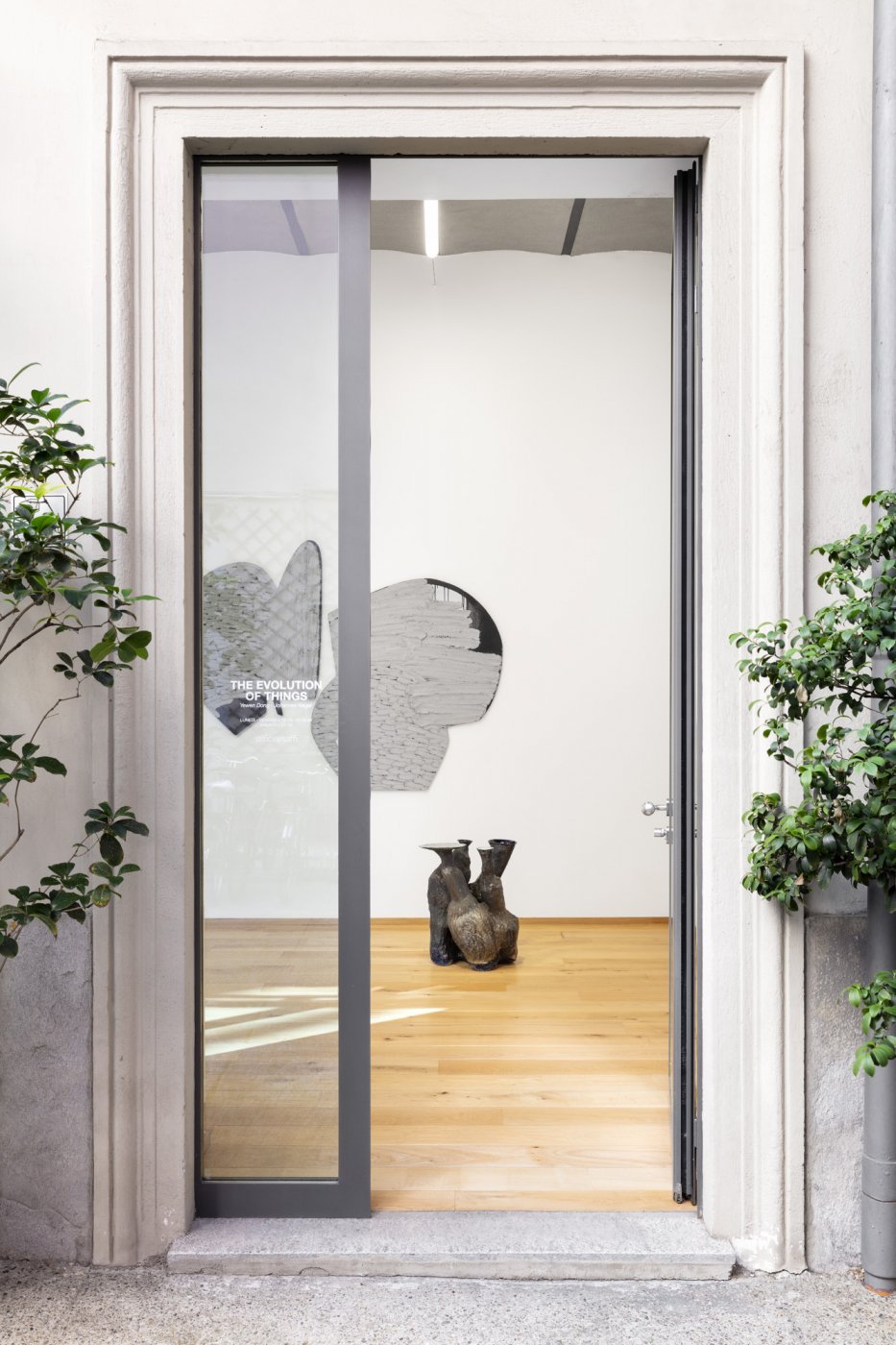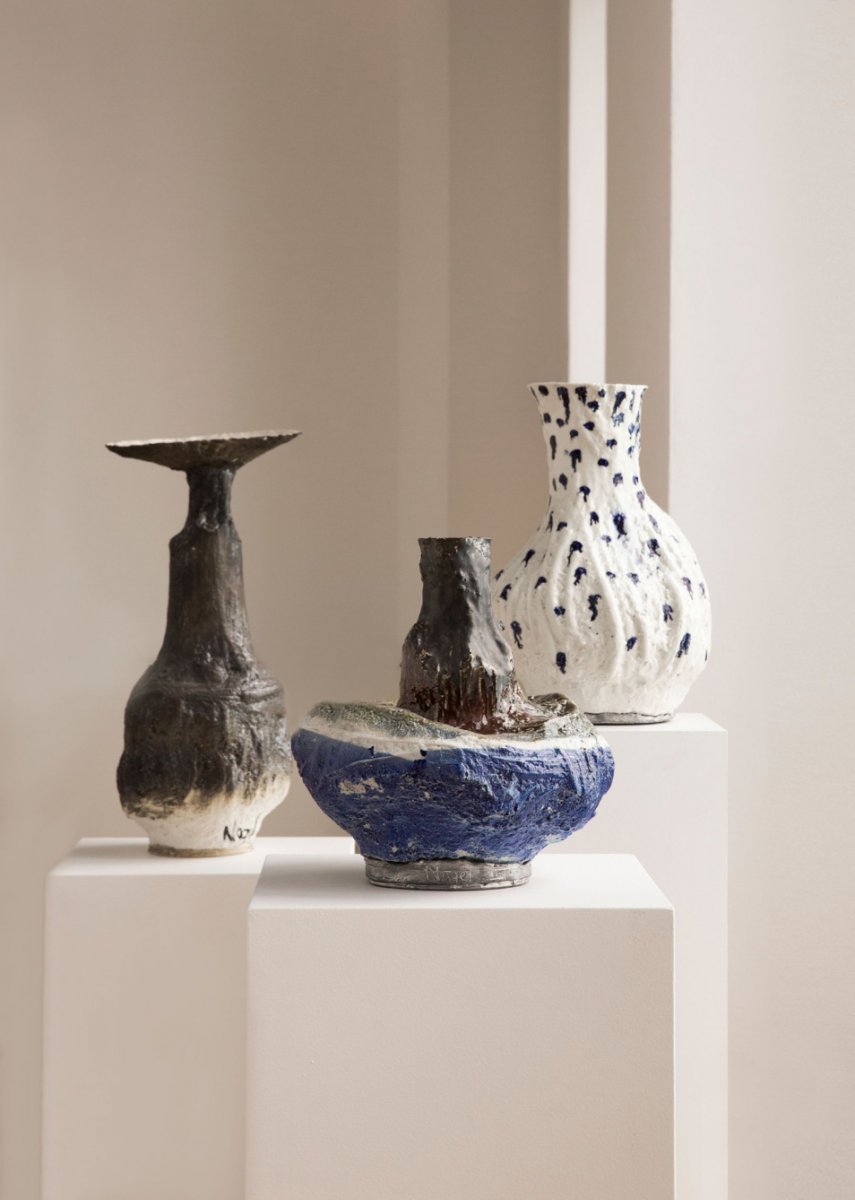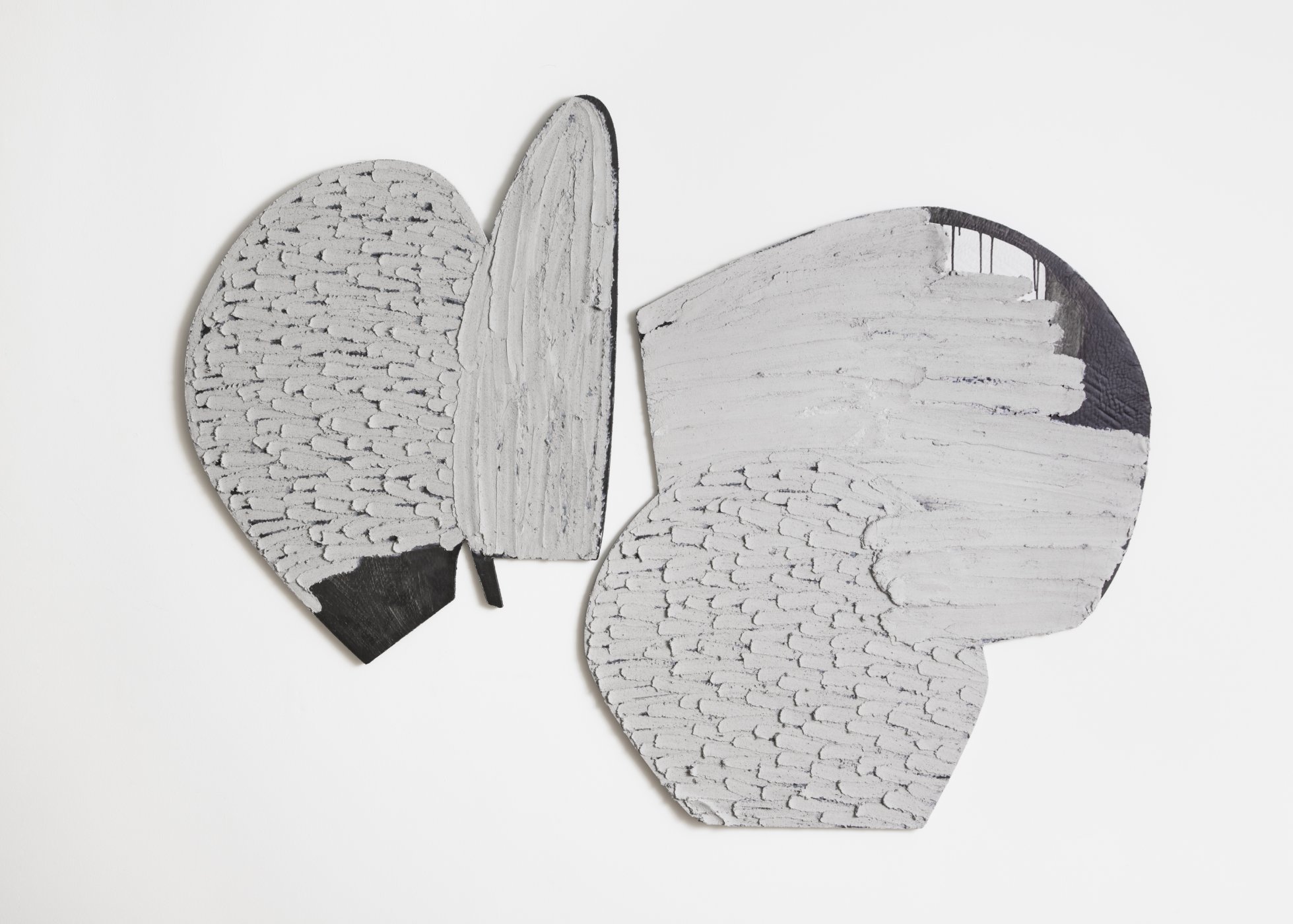The Evolutions of Things
The evolution of things is an exhibition reflecting on the principles of temporariness and indeterminacy. Conceived and created before the health emergency, it uncovers new meaning in this time of uncertainty and reconfigured social behaviour.
If the French sociologist Edgar Morin claims that "evolution is drift, deviance, creation, and it is interruptions, disturbances, crises", the two artists exhibited here propose an evolution of ceramics through a total crisis of the medium.
Yewen Dong uses raw clay as a pictorial medium: mixing the fresh clay with oil painting, she creates large wall installations where the geometric composition dialogues with the material's 'live' nature.
Yewen's work is highly methodical, repeatedly impressing precise gestures – which she calls "calm" – on the surface to outline shapes and volumes. But clay is living material which responds to the hand's touch, and the finished work is, therefore, the (often unexpected) result of a dialogue between them.
The piece at the centre of the gallery represents the crux of the artist's work. This temporary work will stay on the wall for as long as the microclimate allows. The clay is applied without any thickener: it is pure earth, which reacts to the environment, the light and the passage of time. The work is therefore temporary, though it could potentially survive forever.
In Yewen Dong's pictorial and temporary landscape, Johannes Nagel's alienated objects stand out:
Johannes seeks to record the process of the form's evolution, highlighting all the steps required to produce the sculpture. His porcelain works are thus characterised by holes, cuts, drips and growths; they seem suspended in the ecstasy of the unfinished. This body of work is a storehouse of energy that rebels against aesthetics and the comforting pleasure that perfection brings. The result is highly alienating: sometimes the objects look like vases, at other times like geological formations or ruins. They are essentially rhetorical objects which reflect on their own nature and role, and are thus highly poetic.
As David Pye theorises: "Everything we design and make is an improvisation, a lash-up, something inept and provisional"; the artists deconstruct the immortal image of ceramics. In their close and contrasting dialogue, Yewen Dong's wall paintings and Johannes Nagel's vase-sculptures live in a harmonious coexistence between opposites, while simultaneously focusing attention on sculptural evolution.
If the French sociologist Edgar Morin claims that "evolution is drift, deviance, creation, and it is interruptions, disturbances, crises", the two artists exhibited here propose an evolution of ceramics through a total crisis of the medium.
Yewen Dong uses raw clay as a pictorial medium: mixing the fresh clay with oil painting, she creates large wall installations where the geometric composition dialogues with the material's 'live' nature.
Yewen's work is highly methodical, repeatedly impressing precise gestures – which she calls "calm" – on the surface to outline shapes and volumes. But clay is living material which responds to the hand's touch, and the finished work is, therefore, the (often unexpected) result of a dialogue between them.
The piece at the centre of the gallery represents the crux of the artist's work. This temporary work will stay on the wall for as long as the microclimate allows. The clay is applied without any thickener: it is pure earth, which reacts to the environment, the light and the passage of time. The work is therefore temporary, though it could potentially survive forever.
In Yewen Dong's pictorial and temporary landscape, Johannes Nagel's alienated objects stand out:
"SOME OF MY OBJECTS LOOK LIKE VASES, BUT IN REALITY, THEY ARE AN ATTEMPT TO CONFUSE PEOPLE'S EXPECTATIONS OF CERAMICS".
Johannes seeks to record the process of the form's evolution, highlighting all the steps required to produce the sculpture. His porcelain works are thus characterised by holes, cuts, drips and growths; they seem suspended in the ecstasy of the unfinished. This body of work is a storehouse of energy that rebels against aesthetics and the comforting pleasure that perfection brings. The result is highly alienating: sometimes the objects look like vases, at other times like geological formations or ruins. They are essentially rhetorical objects which reflect on their own nature and role, and are thus highly poetic.
As David Pye theorises: "Everything we design and make is an improvisation, a lash-up, something inept and provisional"; the artists deconstruct the immortal image of ceramics. In their close and contrasting dialogue, Yewen Dong's wall paintings and Johannes Nagel's vase-sculptures live in a harmonious coexistence between opposites, while simultaneously focusing attention on sculptural evolution.




